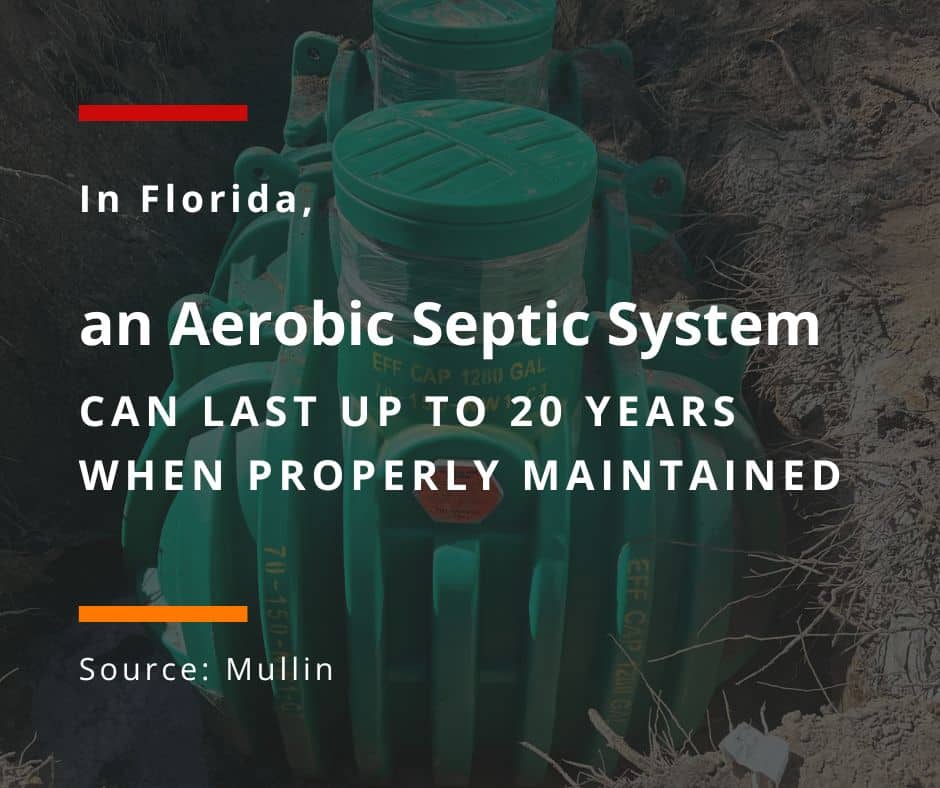Not all septic systems work the same way. If you’ve heard the term “aerobic septic tank,” you may be wondering how it compares to a traditional setup. The truth is, aerobic systems are designed to break down waste more effectively, protect the environment, and offer more flexibility for certain types of properties.
In this post, we’ll walk you through what an aerobic septic tank is, how it works, why it matters, and what it takes to maintain one. If your home uses this kind of system or you’re considering one for your property, here’s what you need to know.
What Is an Aerobic Septic Tank?
Essentially, an aerobic septic tank is the heart of an aerobic treatment unit (ATU), which is a type of onsite wastewater treatment system. Unlike conventional systems that rely on anaerobic (oxygen-free) bacteria to break down waste slowly, an aerobic system adds oxygen to the process.
This added oxygen supports aerobic bacteria, which are faster and more efficient at digesting organic material. The result is cleaner water leaving the system and a smaller environmental footprint.
Most aerobic systems have three main chambers:
- Pretreatment tank – solids settle and begin decomposing
- Aeration chamber – air is pumped in to support oxygen-loving bacteria
- Clarifier – remaining solids settle out before the treated water is discharged
Some systems may also include a chlorinator and pump tank if surface spray or drip irrigation is used.
Why Aerobic Tanks Matter
Aerobic septic tanks are ideal for properties with site limitations, stricter environmental rules, or homeowners looking for a more advanced system. Here’s why they matter:
- Better treatment quality: The wastewater leaving an aerobic tank is much cleaner, with fewer pathogens and pollutants.
- Property flexibility: These systems are often approved for smaller lots, clay-heavy soil, or areas with high water tables.
- Less impact on the environment: The higher treatment level helps protect groundwater, nearby waterways, and soil.
- Lower odor: Because waste breaks down more completely, odor is less noticeable than in a traditional system.
They’re often required in Florida communities with environmental protection standards or when there’s not enough land for a standard drainfield.
How Aerobic Septic Tanks Compare to Traditional Systems
|
Feature |
Traditional Septic Tank |
Aerobic Septic Tank |
|
Bacteria type |
Anaerobic |
Aerobic |
|
Uses oxygen? |
No |
Yes |
|
Waste breakdown speed |
Slower |
Faster |
|
Effluent quality |
Moderate |
High |
|
Odor control |
Limited |
Improved |
|
System cost |
Lower |
Higher |
|
Maintenance needs |
Infrequent |
Regular (usually quarterly) |
Although the initial cost and upkeep are higher, aerobic tanks deliver a higher level of treatment, which can protect your investment over time.
How to Maintain an Aerobic Septic Tank
Routine maintenance is key to making your aerobic septic system last. Unlike traditional tanks that may only need to be pumped every 3 to 5 years, aerobic systems require more frequent attention.
Here are the basics:
- Schedule quarterly service. Most manufacturers and counties recommend or require inspections and maintenance every 3 to 4 months.
- Clean air filters and diffusers. These parts help deliver oxygen and can clog over time.
- Check the aerator and alarms. Your tank likely has a control panel, lights, or audible alerts. Never ignore them.
- Avoid toxic cleaners. Bleach, disinfectants, and antibacterial soaps can harm the bacterial colony in your tank. Use septic-safe products.
- Limit solids and grease. Flush only human waste and toilet paper. Avoid sending fats, oils, or food waste down your drains.
- Pump the tank when needed. Even though aerobic systems treat waste more effectively, they still need occasional pumping. Your technician will let you know when it’s time.
Keep a copy of your maintenance agreement or contract if you live in an area where service logs are required for compliance.
Other Questions Homeowners Often Ask
Can I install an aerobic septic tank on any property?
Not always. Aerobic systems are typically installed when traditional systems are not feasible due to soil conditions, lot size, or local regulations. Get a professional site evaluation.
Are aerobic systems more expensive?
Yes, the upfront cost is higher, and they require more frequent maintenance. However, the improved treatment quality and long-term reliability make it worthwhile for many homeowners.
Is the water safe to reuse?
Treated effluent from an aerobic system may be reused for surface irrigation, depending on local laws. In Florida, reclaimed water rules vary by county.
Will it smell?
Properly maintained aerobic systems produce less odor than traditional tanks. If you notice smells, it could mean the system needs service.
What happens if the power goes out?
Aerobic systems rely on electricity to run air pumps and alarms. If power is lost for more than a day, it will impact waste treatment. A backup power source may be recommended.
When to Call a Professional
If you notice any of the following signs, it’s time to schedule a service visit:
- Alarm lights or warning buzzers have gone off
- Wet, soggy patches near the spray field or tank area
- Strong odors indoors or outside
- Slow drains or sewage backup
- Missed a scheduled quarterly maintenance visit
Don’t try to troubleshoot the system yourself. Aerobic septic tanks contain electrical parts, bacterial colonies, and control systems that only a professional should service.
Final Thoughts
Aerobic septic tanks offer a cleaner, smarter alternative to standard systems, especially in areas like Tampa Bay where environmental care and land use matter. If your home already has one, keeping up with regular service is the best way to protect your property and the system’s lifespan.
If you’re unsure whether you have an aerobic tank or need help maintaining one, the team at Tampa Bay Septic is always ready to help.


